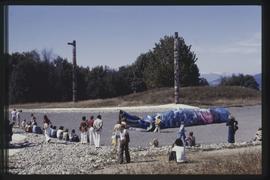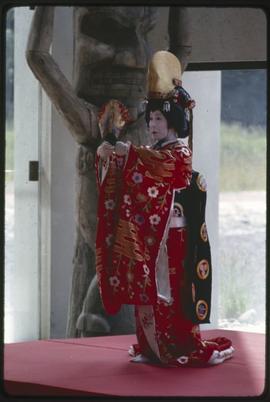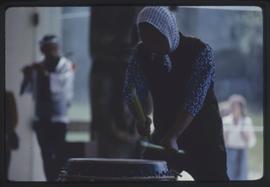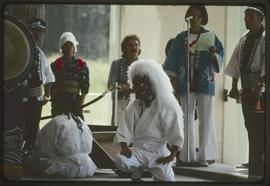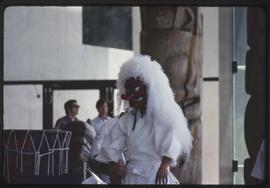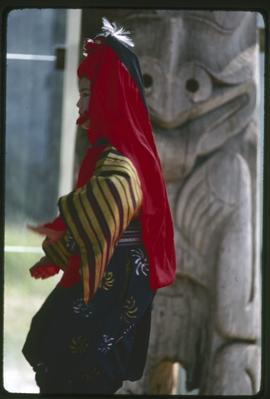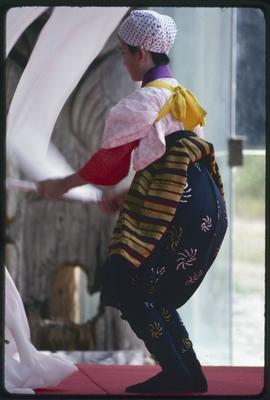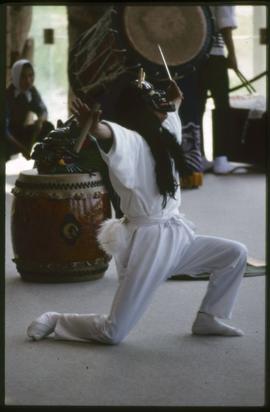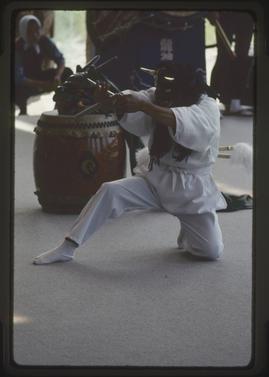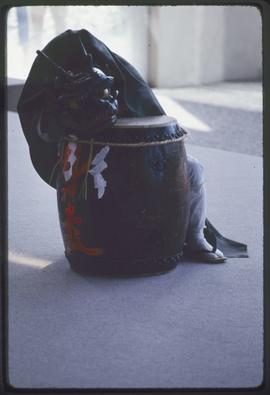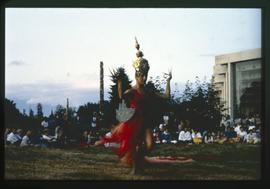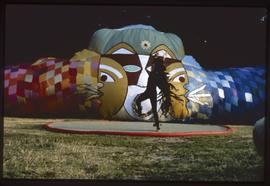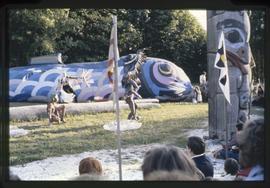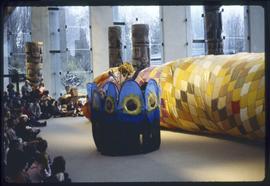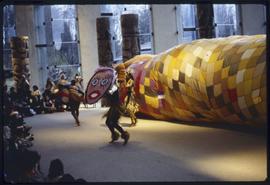Title and statement of responsibility area
Title proper
Photographs
General material designation
- Graphic material
Parallel title
Other title information
Title statements of responsibility
Title notes
- Source of title proper: Supplied title based on contents of the series
Level of description
Series
Reference code
Edition statement
Edition statement of responsibility
Statement of scale (cartographic)
Statement of projection (cartographic)
Statement of coordinates (cartographic)
Statement of scale (architectural)
Issuing jurisdiction and denomination (philatelic)
Dates of creation area
Date(s)
-
1976- 2003 (Creation)
Physical description area
Physical description
Publisher's series area
Title proper of publisher's series
Parallel titles of publisher's series
Other title information of publisher's series
Statement of responsibility relating to publisher's series
Numbering within publisher's series
Note on publisher's series
Archival description area
Name of creator
Administrative history
Audrey Hawthorn, as the Museum of Anthropology first official Curator, was the person initially responsible for Public Programming and Education. In Hawthorn’s time the function involved mainly exhibitions and the programs surrounding them, as well as raising the profile of the museum. When plans for a new building got underway more formal programming guidelines were developed. A Museum Programming Committee was formed in 1971, charged with the function of suggesting programmes for the new museum, which was at this time still in the planning phase. Along with other museum committees, this committee was given the task of developing programming ideas to help dictate the needs of the new building. Their mandate was to establish policy guidelines for museum programming.
In 1974 the Museum Public Programming Committee decided on two spheres of programming: academic and public programmes. Since this time, these functions have been shared by different positions with various titles. These position titles include Extension Curator, Education Curator, Museum Programme Coordinator, Public Programming Coordinator and Curator of Public Programmes.
Individuals that have been involved in these functions were often employed full time in the Museum, while others were employed part-time as museum curators and part-time as professors in the Department of Anthropology. These curators have traditionally had a very fluid function and their roles have included many additional responsibilities outside of public programming and education. These individuals include:
-Audrey Hawthorn, Curator (1947-1977)
-Elvi Whittaker, Coordinator of Public Programming (1973-1976)
-Hindaleah (Hindy) Ratner, Extension Curator (1978-1995) (on leave May -October 1984, January-July 1985, and September 1986-February 1987)
-Madeline Bronsdon Rowan, Curator of Ethnology and Public Programming and professor of Anthropology (April 1977-December 1986) (on leave 1979 and 1986)
-Margaret Stott, Curator of Ethnology and Education, and Professor of Anthropology (1979-1990)
-Roberta Kremer, Acting Education Curator (July 1989-June 1991) Acting Curator of Education and Volunteer Coordinator (1990-1991) Acting Education/Public Programming Curator (while Jill Baird was on leave January 2007- January 2008)
-Louise Jackson, Curator of Ethnology and Education (July 1991-1995) (on leave 1993-1995)
-Rosa Ho, Curator of Art and Public Programming (January 1988-1999) Curator of Art and Public Programming and Education (1992, 1996-1999)
-Jill Baird, Education/Public Programming Curator (March 1999-present) (on leave January 2007-January 2008)
Graduate students Margaret Holm and Susan Hull coordinated extension duties and programmes in Rowan and Ratners' absence in 1986 and 1987. There was no official replacement for the Extension or Education Curators during the absence of Rowan and Ratner nor with their resignations in 1986. This continued until Rosa Ho was appointed as the full-time Curator of Art and Public Programming in January 1988. She added Education Curator to her title in 1992 and again after the departure of Jackson in 1996. She held the position of Curator of Art, Public Programming and Education until she left in 1999.
Jill Baird took over the position of Education/Public Programming Curator in March 1999. This new position included the majority of the functions of the Art and Public Programming Curator, as well as the traditional functions of both the Extension and Education Curator and some additional responsibilities.
The function of Public Programming and Education has traditionally been responsible for exhibitions, education, public programs, and extension activities at the Museum of Anthropology. The primary function of this area was to locate cultures within the world context of art, to prepare exhibits, including travelling exhibits, to enhance cultural understanding and enjoyment of cultural diversity, and to cut across the disciplinary boundaries of art history, anthropology, and archaeology. These functions were developed in particular ways for specialized audiences through Exhibitions, Education, Public Programmes, and Extension activities.
The Education function has included establishing and supervising school programmes for students and teachers, and training members of the Volunteer Associates to conduct these programmes. Programmed activities included orientation walks, self-guided visits to the museum, cultural performances, and a variety of participatory sessions designed to complement the school curriculum, this included the development of units of curriculum and "touchable" artifact kits. School artifact kits included specially designed information and artifacts that were packaged and lent out to British Columbia schools to further anthropological education outside of the museum setting. The education programming also provided professional development workshops for teachers and students.
Public Programmes included artists' talks and panel discussions, storytelling, music, performances, workshops, lectures, non-credit courses, museum tours, identification clinics and audio-visual presentations.
Extension activities included the loaning out of exhibit materials and creation of travelling exhibitions. This included coordinating the development of in-house exhibitions, special events and lectures in conjunction with exhibits, exhibits in office spaces, and installations in off-campus locations.
The Museum's current public programming mandate, as of 1999, seeks to provide a forum for cultural expression, experimentation, and exchange of views. This is done through a variety of programs, including public talks, demonstration, guided gallery tours, lectures, hands-on workshops, artist talks, music, performances, film viewing and educational programs.
The Museum's current educational programming mandate is to develop and deliver quality programs to elementary and secondary school students that introduces them to other cultures and makes innovative use of the Museum's collections, exhibitions, and other resources. These programs include elementary and secondary classes, special programs developed in conjunction with temporary exhibitions, the Musqueam School, and summer day camps. Many of the educational programs are jointly developed with artists and other institutions.
Custodial history
Scope and content
Series consists of photographs, negative and slides documenting activities of the Museum of Anthropology. Most activities took place at the museum, but some took place elsewhere. The activities documented include exhibit openings, exhibit preparation, celebrations, artists working, presentations, conferences, workshops, and notable guests.
Slides in subseries 1-5 are stored in five binders, arranged chronologically. Photographs, negatives and slides in subseries 6-8 are stored in boxes, arranged according to the events they depict. Slides in subseries 9 are stored in a box, arranged topically.
Notes area
Physical condition
Immediate source of acquisition
Arrangement
Language of material
Script of material
Location of originals
Availability of other formats
Restrictions on access
Access to some slides is restricted. Consult archivist for details.
Terms governing use, reproduction, and publication
Finding aids
Generated finding aid
Associated materials
Accruals
Alternative identifier(s)
Standard number area
Standard number
Access points
Subject access points
Place access points
Name access points
Genre access points
Control area
Description record identifier
Institution identifier
Rules or conventions
Status
Level of detail
Dates of creation, revision and deletion
Created May 2018 by Stephanie Salvaterra



